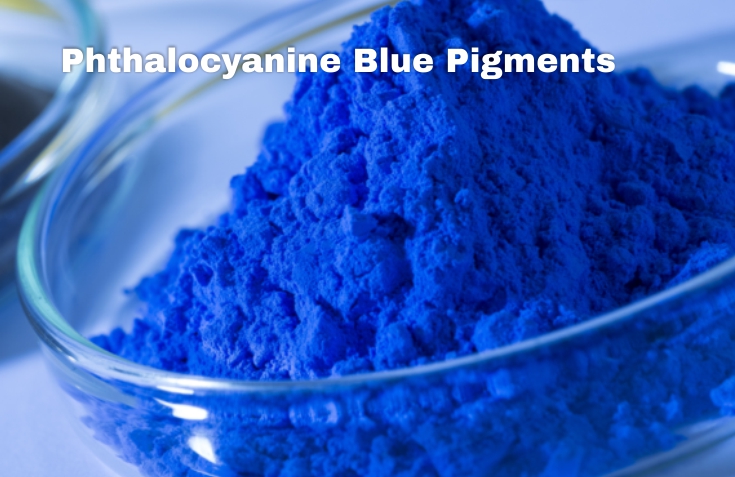
Phthalo Blue
Blue phthalocyanine also known as phthalo blue or thalo blue, is an organic pigment that is widely used in various industries, namely, textiles, paper and plastic. They are widely used organic pigments which find extensive use in various industries including textiles, paper, plastics, etc. They mainly contain blue and green which are used as dyes and pigments. The effect is long lasting compared to many colors and seems to be a very popular choice. Phthalo Blue is a bright blue, crystalline, synthetic pigment from the phthalocyanine dye group.
Characteristics of pigment 15
The main attributes of Phthalo Blue are transparency, extraordinary coloring strength and coloring strength. You only need a little pigment and often enough to wash, or shift the mixture. It’s also very stained so it’s very difficult to lift it from watercolor paper, or even from any surface.
History
The first Phthalocyanine pigment was accidentally produced while o-dibromobenzene was converted to phthalonitrile by Swiss researchers.
A series of organic color pigments used in printing ink. Most of the Phthalocyanine blues mentioned below are categorized as CI Pigment Blue 15, each different from each other in one case or another, and is a modification of PB 15.
Phthalocyanine Blue is a strong red blue, and has high light resistance and is resistant to acids, alkalis, heat, wax, oil, solvents and soaps. This is the least used PB 15 pigment, but is sometimes used in news ink. This variety is a form of PB-15 which is not stable in solvents.
Phthalocyanine Blue (Alpha, Solvent-Stable) is a bright red color of blue, and has high light resistance and is resistant to acids, alkalis, heat, wax, oil, solvents and soaps. This is the most commonly used PB 15 pigment, accounting for 25% of the use of PB 15. It is more heat resistant and more stable-solvent than the above alpha form.
Phthalo Blue 15:1 NC Alpha
Phthalocyanine Blue 15:1 NCNF (Alpha Form, Solvent-Stable, Non-Flocculating) is a bright blue red color, and has many of the same properties as PB 15: 1, different in that pigment particles have been treated to prevent flocculation, or unwanted particles clumping . This is more expensive than PB 15 or 15: 1, but accounts for around 5% of PB 15 use.
Pigment Blue 15: 2
Phthalocyanine Blue 15:2 NC (Beta Form, Solvent-Stable) is a bright blue green, and has high light resistance and high resistance to acids, alkalis, heat, wax, oil, solvents and soaps. This is transparent, solvent-stable, has strong coloring strength, but is weaker than the alpha form of Phthalocyanine Blue. This is the most commonly used cyan in the color printing process, because it can be used in any type of printing and inking process.
Pigment Blue 15: 3
Phthalocyanine Blue 15:3 B NCNF is a bright green color from blue which has all the high resistance properties of other PB 15 pigments. This version, such as PB 15: 2, has been treated to prevent flocculation of pigment particles. This is used mainly in liquid ink, and is also useful as a cyan process color.
Pigment Blue 15: 4
Phthalocyanine Blue 15:4 is a strong red color from blue, and has all the high resistance properties of the Phthalo Blue series. This is the only solvent-stable reddish color in this series, and found most of its use in liquid ink applications.
Pigment Blue 15: 6
Phthalocyanine Blue is the greenest color of Phthalo Blue, and has high resistance properties from other Phthalo Blue pigments, although it tends to be less heat-resistant than other versions. (The main difference, as the name suggests, is the lack of copper in its molecular structure.) This is more expensive than other Phthalo Blues, and is limited to use in applications that require metal-free ink.
Market Use
The market for Phthalocyanine pigments can be segmented by application and end use. Its segmented into – paints, plastics, rubber, fabrics, leather, soaps, detergents and coatings.
Meanwhile, on the other hand, based on the end-use industry, the Phthalocyanine pigment market can be divided into several sectors such as construction, aviation, textiles, automobiles and other industries.
Phthalocyanine Blue is a raw material for dyes and pigments, so the demand all depends on the information received. Manufacturers need to develop their business strategies through this insight.
Pigments for Paints and Coatings
Pigments for Plastics and Masterbatch
